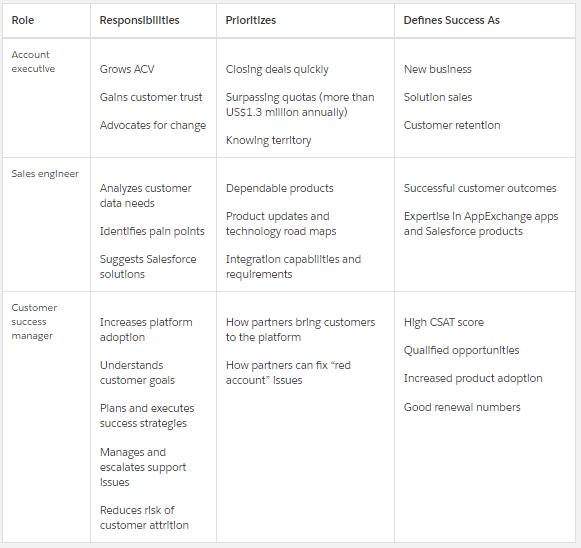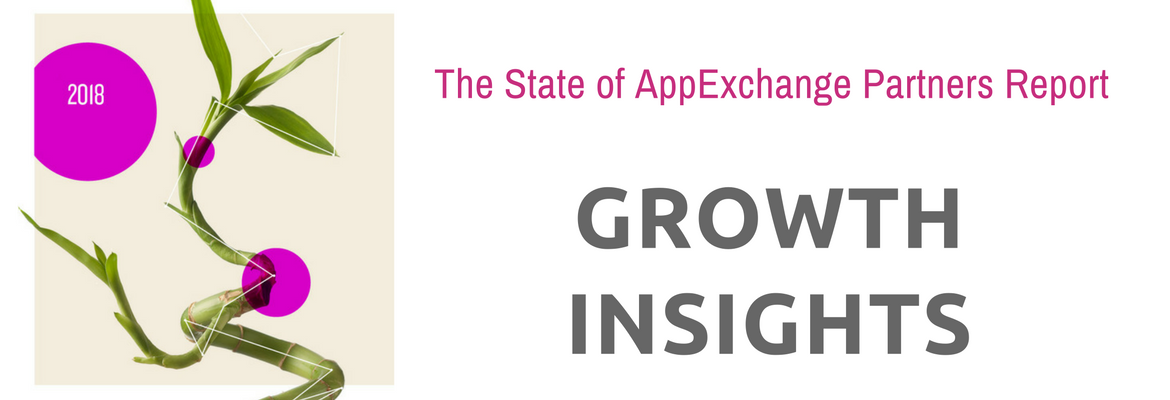
A core concern we hear from prospective or current clients is how to maximize the Salesforce channel.
We’ve launched 300+ successful products on the AppExchange over more than 13 years…so we totally get where they’re coming from.
Fortunately, for people committed to learning the ropes, there’s a program in place.
One of our favorite resources to recommend (especially for beginners) is Salesforce’s Trailhead, an in-depth series of tutorials, tips and training modules designed to help users quickly learn skills that benefit their businesses.
The more aligned you are with Salesforce’s process and methodology, the easier the journey to launching on the AppExchange and, ultimately, the more customers you’ll have using your product.
Available on the “Build Apps as an AppExchange Partner” trail, a nearly-12-hour deep dive covering the process from beginning to end, the module “AppExchange App Selling” — just 55 minutes long — can get those new to selling with Salesforce up to speed quickly.
More importantly, it helps SaaS companies understand how best to partner with Salesforce to drive sales and boost revenue. (Sometimes it pays to drink the kool-aid!)
You should check out the full courses for each of these, but we’ll hit you with our cliffs notes to accelerate the learning curve.
Get to Know the Salesforce Way of Selling
Congratulations, you’re in the “Salesforce Ohana” (family)! So, cutting to the chase, how do you use your family to your advantage?
It’s crucial to ensure that Salesforce sales reps understand how your product makes Salesforce better. The more effectively you’re able to communicate this, in their language, the better equipped they’ll be to pitch it to their customers.
Extra credit if you fully grasp their roles and motivations. Below is a helpful chart on the sales roles you’ll be interacting with, and what’s driving them.

Finally, consider the commonalities in goals — you’re all working for:
- More deals
- Bigger deals
- Faster closing times
- Lower risk of customer attrition
That’s why you’re Ohana.
Know Your Business
Your customers rely on you for insights on your business. Are you prepared to answer each of the following questions:
- Who are the customers you’re targeting?
- Who are your major competitors?
- Why should anyone care about your product?
- How does it fit into the Salesforce ecosystem?
If you are, skip ahead to the next section, you’re in great shape.
Still here? Start by considering what type of Salesforce customer you’re targeting, defining industry, location and size. Then, you’ll want to discuss these with an AE, to plot a targeting strategy that meets these customers’ needs.
Salesforce provides a list of common questions reps may ask; the more you perfect your pitch ahead of time, the more comfortable you will be in fielding these:
- What three things define and differentiate your solution?
- How does your product fit into the Salesforce ecosystem? Is it a stand-alone solution, or does it extend one of Salesforce’s core products?
- Who are your direct and indirect competitors?
- What other products does yours work with?
If you feel like you need more tips on crafting your value proposition, check out this slideshare that goes into more detail.
Build Your Network
This unit focuses on how to begin connecting (effectively) with the right sales teams.
It’s not as easy as dialing the right number or emailing the right address with a quick pitch; for best results, Salesforce recommends putting together a Salesforce-facing sales kit that’s composed of helpful supporting materials. These should be shared with your PAM (partner account manager), who can then distribute to sales and product teams.
The recommended components of the sales kit include:
- A partnership FAQ that addresses any questions the team might have
- At least three customer stories in a slide deck
- A one-page partnership “cheat sheet” to introduce yourself to Salesforce sales reps internally
- A partnership playbook: A brief slide deck for your first meeting
- A short interactive or recorded demo
While your internal account execs should be familiar with the kit, and promoting it via email and digital channels, a key hack to optimizing awareness among Salesforce sales teams is through connecting with them in person at networking events.
Whether it’s industry conferences, hosted or attended happy hours, or Dreamforce, you’ll be able to begin and nurture relationships with the right people — just by being in the right room.
Close Deals, Keep Customers Happy, and Promote Your Success
So you’re fully up to speed with the earlier steps, and the opportunities are pouring in. Can you close them…and keep them?
This is the least formulaic of the modules, but offers some helpful advice for working with your sales team to close deals and delight customers.
Know Your Roles
Most Salesforce AEs expect you to take the lead on managing a deal, but it’s important to confirm with them who will handle each step.
Below is a chart that shows Salesforce’s six-step framework for deal management — each of these stages should be planned and considered.

Keep Your Team Connected
After closing a deal, you’ll have many moving parts to manage — including the introduction of your customer success manager and sales engineer into the onboarding process. It’s important to develop an agreed-upon roadmap for implementation, and be transparent and communicative with Salesforce team members and your customer.
Promote Your Wins
Closing new business can open doors to new opportunities…if people know about it. Promote these wins on your digital properties (website, social channels, chat groups, etc) and to the Salesforce AE team. Increasing awareness of success may lead to more of it.
If you need help maneuvering within the Salesforce ecosystem, we have a 360` view of how it all works. Drop us a line and we’ll get you moving in the right direction ASAP.


